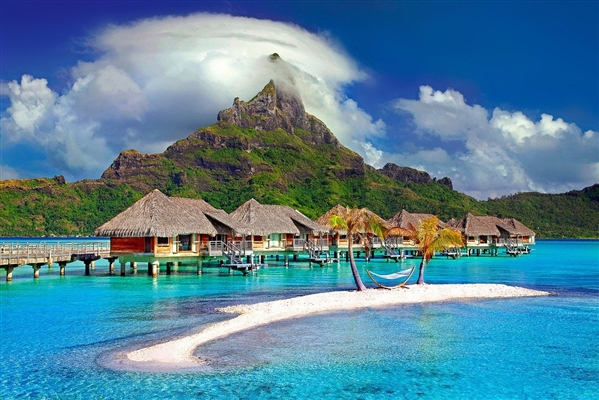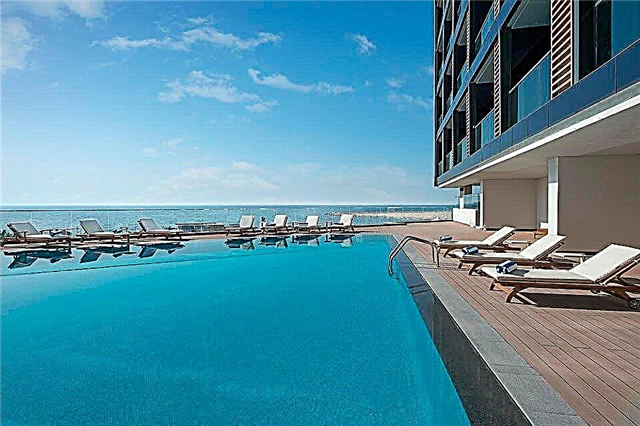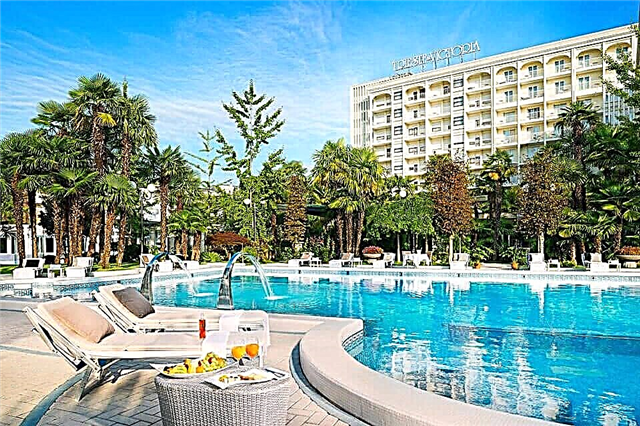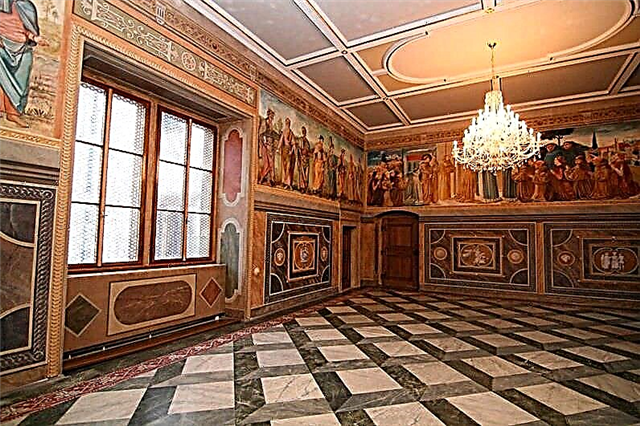"Zlata Praha" consists of districts, each of which has its own unique history, its own architectural and cultural flavor. One of them is Hradcany, a kind of city within a city, built up with palaces and mansions, which are true masterpieces of architecture. Prague Castle, as Hradcany is also called, begins from Hradcany Square, where magnificent monuments are concentrated, attracting thousands of admiring tourists here. Here, literally every building is an example of beauty and unsurpassed skill of architects, builders, artists - all those who put their minds, efforts, hands to create beautiful sights.

Matthias Gate
On Hradcanska Square, everyone passes through the Matiashovy Gates - the main entrance, which bears the name of its creator. Every day from 6 a.m. to 00:00 a.m. the gate is hospitably open to the public. The guard guard changes hourly, and the ritual of changing at 12.00 turns into a real show. Fanfare sounds solemnly, flags change, guards in beautiful blue uniforms flawlessly perform the whole ritual, arousing genuine interest and admiration of tourists. Striped sentry boxes on both sides of the entrance visually transfer to the past of old Europe. The triumphal arch of the gate is lavishly decorated with the heraldic coats of arms of Matthias and his subjects. Time closely connected the entrance with the buildings of the West Wing of the square, which can be reached by 2 staircases going from the gate to them.
Tuscan palace

One of the main palaces in the western part of the square is named after the names of the dukes who owned it. This monumental, picturesque building with a red roof and colored frames of numerous windows embodies the classic beauty of the Roman Baroque. The upper balustrade of the building is decorated with statues that represent the 7 arts of the Hellenic era, and the Tuscan heraldic ornaments are placed on the facade. The most famous architects and sculptors of the 17th century took part in the development and implementation of the palace project.
The talented sculptor Bruckoff created unique sculptures that symbolize the main forms of art; the equally famous Ottavio Mosto worked on the magnificent statue of the Archangel Michael. Now this beautiful building houses the representative office of the Czech Foreign Ministry.
Archbishop's Palace

The majestic facades of many palaces are a whimsical interweaving of Baroque, Renaissance and Classicism architectural styles. The Archbishop's Palace, a clear confirmation of this idea, was built in the 16th century, when the Baroque dominated, for the favorite of Ferdinand I. A few decades later, the building became the property of the Prague archbishops and underwent repeated reconstructions, adding the features of classicism to the general appearance of the palace.
The interior interiors were transformed in the Renaissance style, decorated with the richest chandeliers, luxurious lamps, unique tapestries by the best masters of painting, and luxurious furniture. At the end of the 18th century, a solemn 3-storey building with the chapel of John the Baptist, with many original windows, with an arcade corridor acquired a finished modern look. The Archbishop's Palace is a striking example of late Baroque architecture.
[leveltravel country = ”CZ” city = ”Prague”]
Martinic Palace

The majestic complex of the Martinic Palace was erected in the 16th century, according to historical documents, on the site of houses burned down by a fire. This monument of Renaissance architecture owes its origin to two owners: the hereditary nobleman Teiflu, who laid the foundation for the future palace, and the imperial governor Jiří Martinitz, who continued the construction of the magnificent structure. The construction of the palace ensemble was completed by the descendants of Martinitz - his nephews, who expanded the eastern part of the complex and added a northern wing. The central façade is decorated with wall paintings with Old Testament scenes illustrating scenes from the life of Joseph, the legendary Samson and the mythical Hercules. The main entrance is marked with the Martinishev family coat of arms - a water lily leaf with a star.
Each subsequent reconstruction brought something new: already at the beginning of the 19th century, another 1 floor was completed, which became the object of placing on it various stucco decorations in the style of the late Renaissance and a pediment in the classical style. The greatest contribution to the arrangement of the interior was made by Yaroslav, according to whose instructions the design of the halls, ceilings and walls exactly corresponded to the interior arrangement of the Royal Palace in Prague.

Having gone through a period of decline, the palace was revived thanks to a grandiose restoration that lasted 14 years (from 1953 to 1967) and gave it the same look of its former heyday. The authorities and the public, interested in preserving the architectural and historical masterpiece, are making efforts to carry out reconstructions, the last of which was started in 2007 and completed in 2011. The Martinic Palace is now open to tourists and houses a museum of musical mechanisms from different eras.
It is impossible to describe all the architectural treasures of Hradcany Square within the framework of one article, it is best to see everything with your own eyes.











